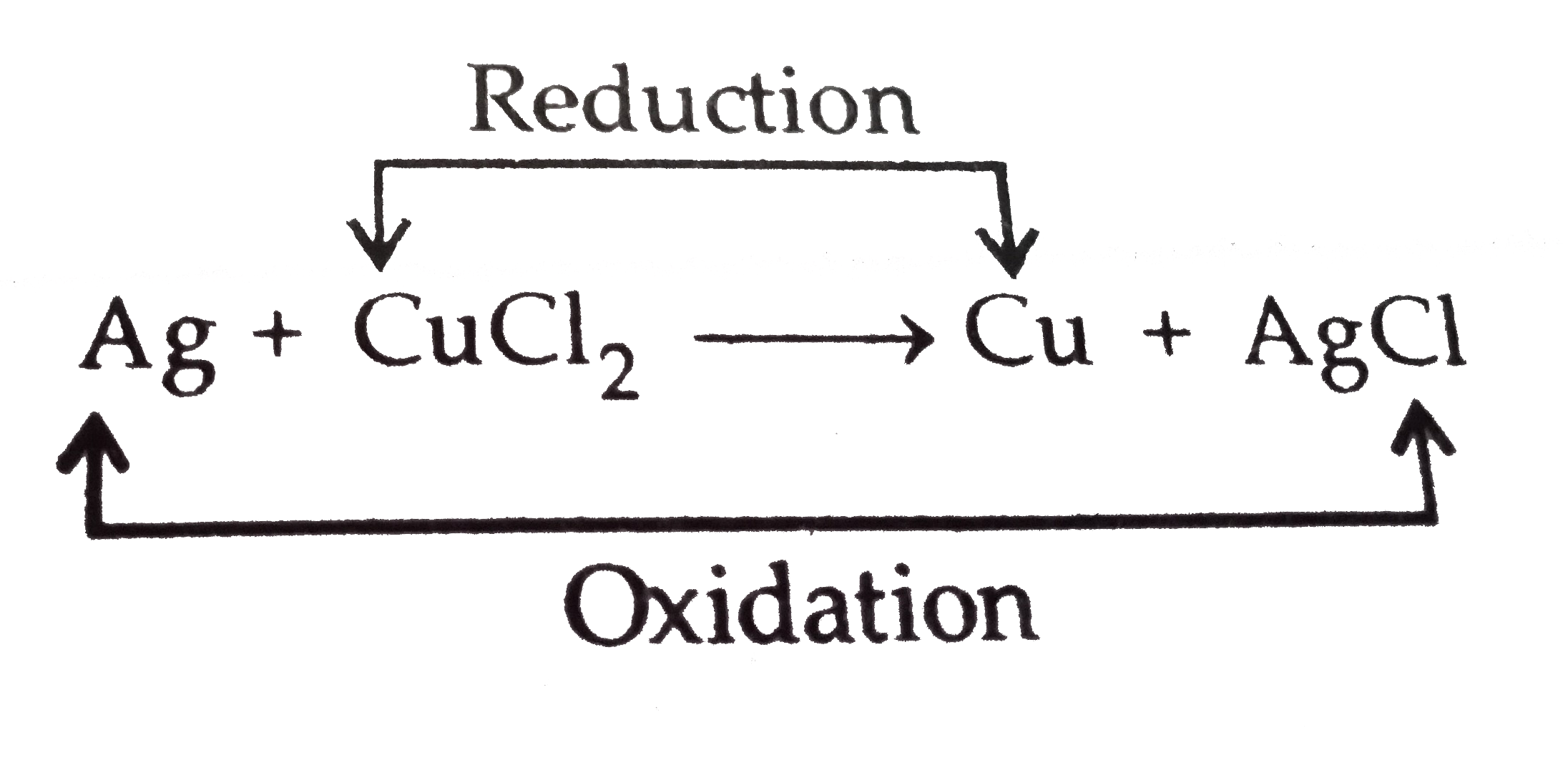(a) When a bright silver object is placed in the solution of gold chloride, it acquires a golden tings but nothing happens when it is placed in solution of copper chloride. Explain this behaviour of silver.
[Given : E∘Cu2+/Cu=+0.34V,E∘Ag+/Ag=+0.80V,E∘Au3+/Au=+1.40V]
(b) ![(a) When a bright silver object is placed in the solution of gold chloride, it acquires a golden tings but nothing happens when it is placed in solution of copper chloride. Explain this behaviour of silver. [Given : E(Cu^(2+//)Cu)^(@)=+0.34 V, E(Ag^(+//)Ag)^(@) =+0.80 V, E(Au^(3+//)Au)^(@) =+1.40V] (b) Consider the figure given above and answer the following questions : (i) What is the direction of flow of electrons? (ii) Which is anode and which is cathode? (iii) What will happen if the salt bridge is removed ? (iv) How will concentration of Zn^(2+) and Ag^(+) ions be affected when the cell functions ? (v) How will concentration of these ions be affected when the cell becomes dead ?](https://d10lpgp6xz60nq.cloudfront.net/physics_images/SB_CHM_XII_DB_I_2017_E01_030_Q01.png)
Consider the figure given above and answer the following questions :
(i) What is the direction of flow of electrons?
(ii) Which is anode and which is cathode?
(iii) What will happen if the salt bridge is removed ?
(iv) How will concentration of Zn2+ and Ag+ ions be affected when the cell functions ?
(v) How will concentration of these ions be affected when the cell becomes dead ?
Video Solution
Text Solution
(a) When a bright silver object is placed in gold chloride

E∘Cell=E∘cathode−E∘anode
E∘cell=E∘Au3+/Au−E∘Ag+/Ag
= 1.40 - 0.80 = 0.60V
E∘cell=+0.60V
When silver is palced in copper chloride solution

E∘cell=E∘C−E∘A
=E∘Cu2+/Cu−E∘Ag+/Ag=0.34−0.80
E∘cell=−0.46V
As E∘ cell is positive for gold chloride solution. Hence reaction is feasible and silver object acquires a golden tings but E∘ cell is negative for copper chlrodie. Hence, nothing happens with it.
(b) (i) Electrons flow from negative pole to positive pole (from left to right) i.e., from anode to cathode.
(ii) The Zinc electrode at which oxidation takes place is anode and silver electrode wherer reduction takes places is cathode.
(iii) Circuit will not be completed, flow of electrons will stop and hence the current stops flowing.
(iv) Concentration of Zn2+ decreases and Ag+ ions increases when the cell functions.
(v) When E cell = 0, equilibrium is reached and concentration of Zn2+ and Ag+ ions will not change.
|
Similar Questions
Knowledge Check
Given E∘Ag+/Ag=+0.80V,E∘Cu2+/Cu=+0.34V,E∘Fe3+/Fe2+=+0.76V,E∘Ce4+/Ce3+=+1.60V
Which of the following statements is not correct ?AFe3+ does not oxidise Ce3+.BCu reduces Ag+ to Ag.CAg will reduce Cu2+ to Cu.DFe3+ oxidises Cu to Cu2+
E∘Cu2+/Cu=0.43V
E∘Cu+/Cu=0.55V
E∘Cu2+/Cu+=
View SolutionIf E∘Au+/Au is 1.69 V and E∘Au3+/Au is 1.40 V, then E∘Au+/Au3+ will be :
View SolutionCan we use a copper vessel to store 1 M AgNO3 solution?
Given
EΘCu2+/Cu=0.34V EΘAg+/Ag=0.80
View SolutionWhich of the following statements is correct? If E∘Cu2+∣Cu=0.34V,E∘Sn2+∣Sn=−0.136V,E∘H+∣H2=−0.0V
View SolutionGiven that E0Cu2+/Cu=0.337 and E0Cu+/Cu2+=−0.153V. then calculate E0Cu+/Cu
View SolutionCan a solution of 1 M ZnSO4 be stored in a vessel made of copper ? Given that
E∘Zn+2/Zn=−0.76VandE∘Cu+2/Cu=0.34V
View SolutionWhy blue colour of CuSO4 solution gets discharged when zinc rod is dipped in it ? Given, E∘Cu+2/Cu=0.34VandE∘Zn+2/Zn=−0.76V
View Solution
